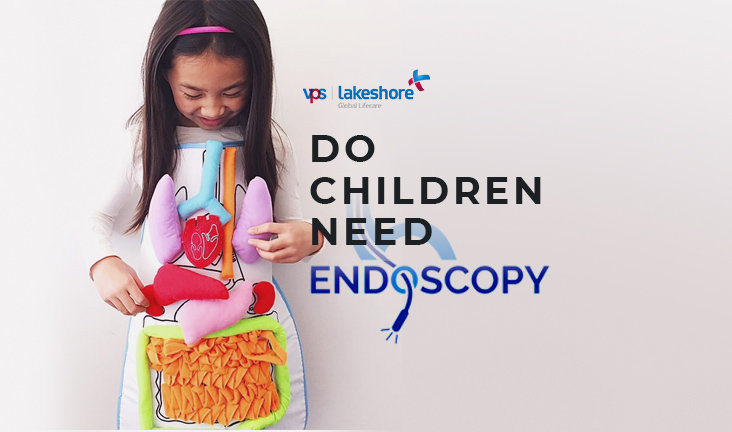Video
Consultation

عربى

Video
Consultation

Book An
Appointment

Accident & Emergency
99616 30000

Help Desk
99616 40000

Robotic
Surgery

Patients Login Portal

Pediatric Endoscopy Procedure is often looked at with apprehensions regarding its process. Here’s an account that explains its process, types and scope in detail.
Do Children Need Endoscopy ?
This is a common query we come across in our practice in Pediatric Gastroenterology. Yes, there are situations which demand endoscopy in children for diagnosis or for therapeutic interventions. The youngest baby on whom we performed endoscopy was only a day old. The baby had undergone OGD (endoscopy through the mouth) due to a bleed from her stomach. Another common method of Endoscopy in children is Colonoscopy (endoscopy through the bottom).
Common Indications for an OGD
OGD or Upper GI endoscopy examines the food pipe, stomach and few inches of the upper part of small intestine. The common indications for a need of OGD in children include recurrent vomiting, unexplained abdominal pain, swallowing difficulties, and blood in vomitus or corrosive ingestion of acids or detergents. Swallowing foreign bodies like coins, button batteries, jewelry also mark yet another indication for OGD and they can be retrieved endoscopically. Among the swallowed foreign bodies, sharp objects, button battery and magnets need a special approach as they can be potentially dangerous and need to be removed as early as possible.
Common Indications for a Colonoscopy
The most common indication for Colonoscopy in children is blood in stools, long standing loose stools or when there is suspicion of inflammatory bowel disease including Crohn’s disease and Ulcerative Colitis. There is a need for bowel cleansing prior to colonoscopy using special preparations for washing out the stools and for clear visualization.
Endoscopy for Therapeutic Intervention
We can also do therapeutic procedures like clipping or charring the tissue to stop the source of bleeding or cutting and removing as in the case of a polyp. Foreign body retrieval and dilatation of narrowed food pipe in children with corrosive ingestion are some of the other interventions performed.
Advanced Endoscopic Procedures
There are several other advanced endoscopic procedures like ERCP which are performed if there is a block in the biliary system that drains bile or even for pancreatic problems. Endoscopic Ultrasound is an advanced endoscope where an ultrasound device is connected to the tip of the endoscope to visualize organs like gallbladder, pancreas and abdominal lymph nodes closely. The tissue can be procured for microscopic examination as and when needed.
Is it Pain-free?
The size of the scope varies depending on the age and size of the child. It ranges from scopes thinner even than a pencil which can be used in newborns and very young children to bigger scopes which can be used in older children. These procedures are performed with adequate sedation so that the children do not experience any discomfort. The process is ensured to be ‘pain-free’ and the children wake up as if from a dream.So to conclude, Paediatric Endoscopies are sometimes needed in children for diagnostic and therapeutic purposes. They are safe and can be done on a pain-free basis in children.
By,
Dr Maya Peethambaran, MD,DNB,DNB(Gastro), MRCPCH, MRCP(Glasg) Department of Paediatric Gastroenterologist and Hepatologist